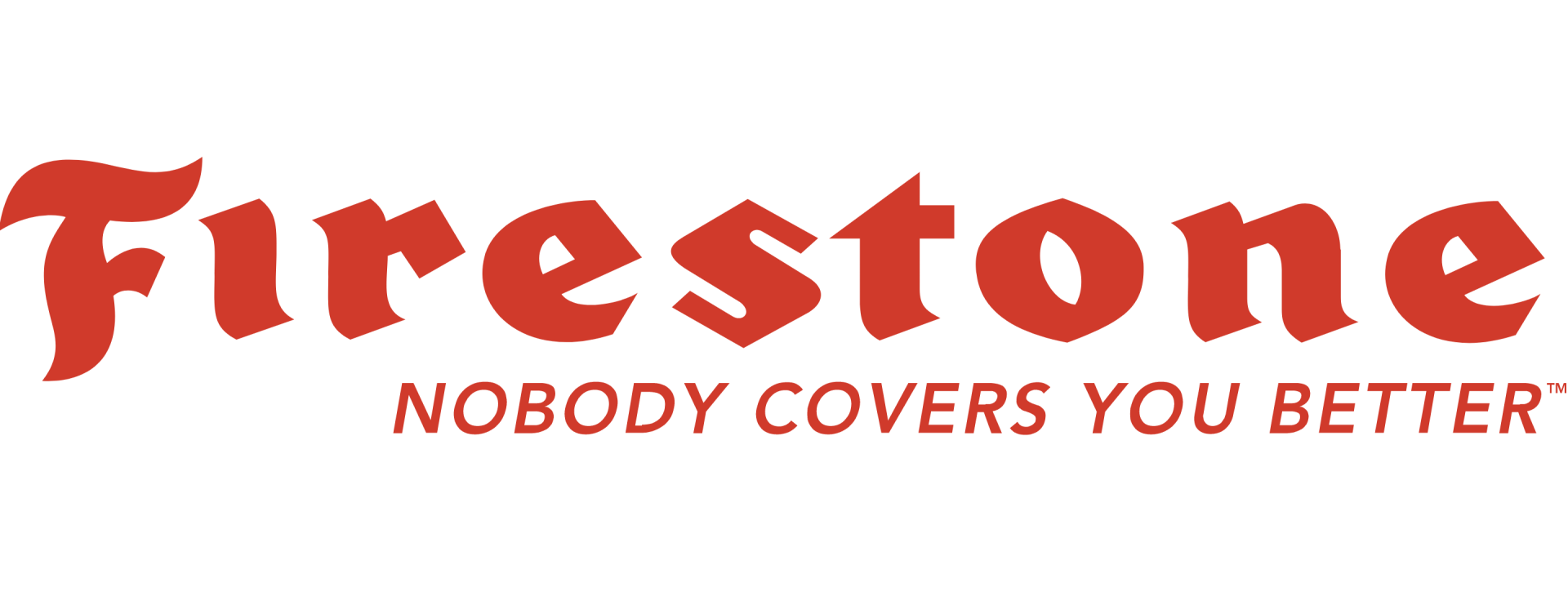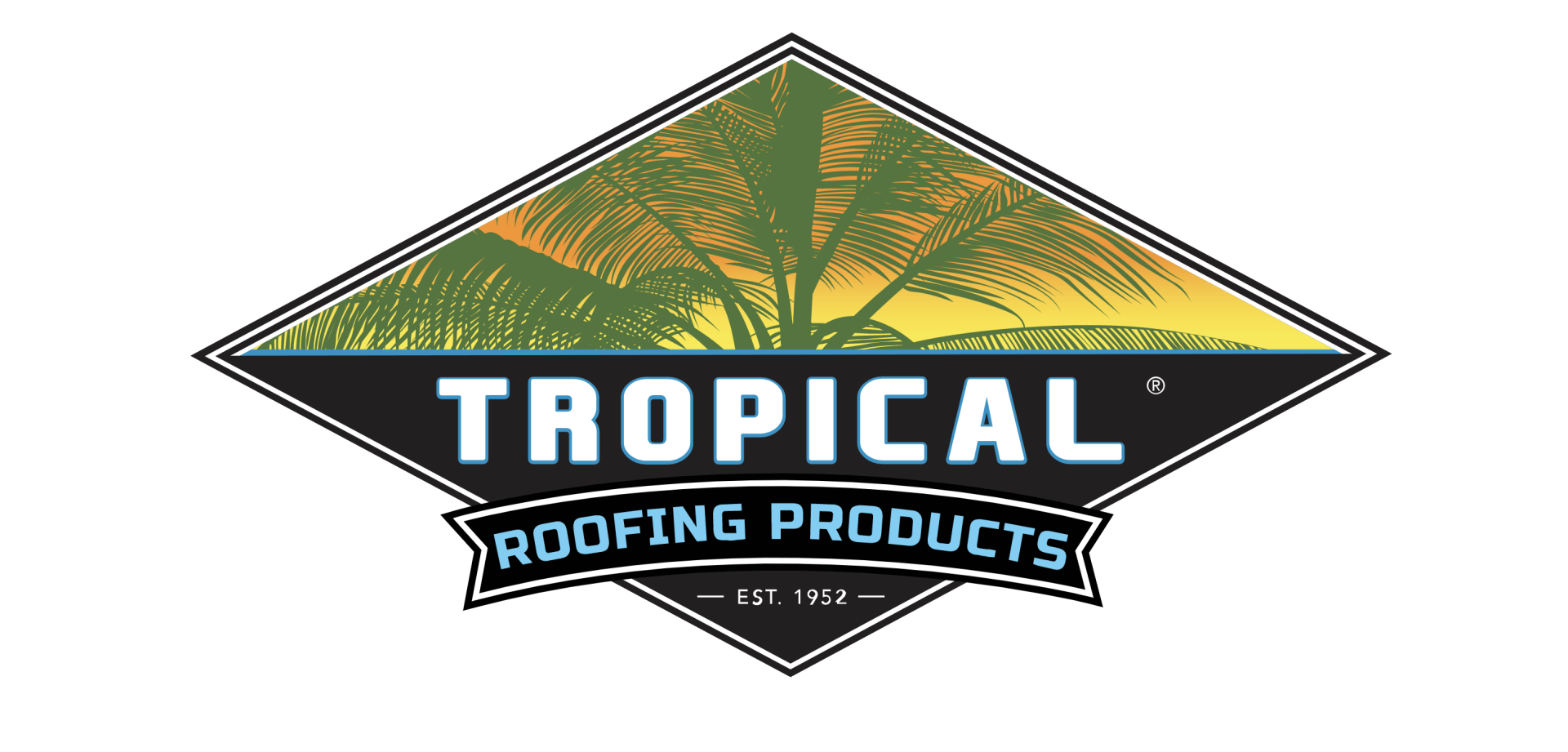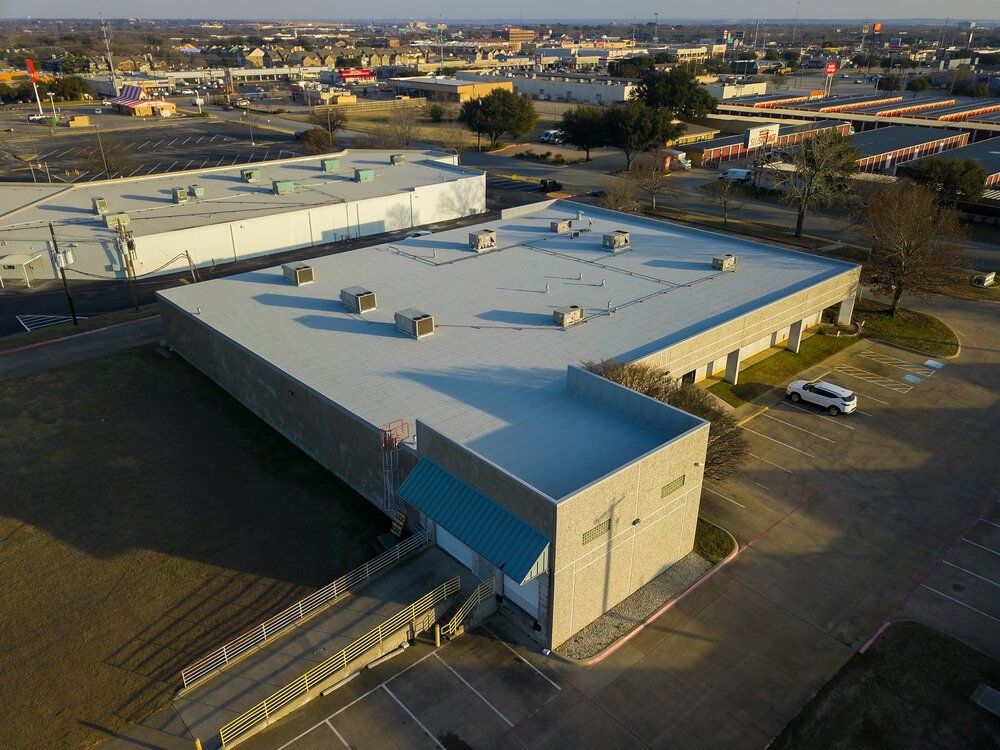CALL US NOW!
BEST FLAT ROOF
TYPES IN Flower Mound TX OFFERED BY LANCASTER ROOFING
- Industry-leading materials
- Complimentary roof inspections
- Commercial maintenance program offered
BOOK YOUR FREE INSPECTION
We will get back to you as soon as possible.
Please try again later.
COMMERCIAL FLAT ROOF TYPES
PVC
Durable, resistant to chemicals and fire, lightweight, reflective, ideal for flat or low-slope roofs.
SPRAY FOAM
Seamless, insulating, waterproof, easily applied over existing roofs, enhances energy efficiency and durability.
TPO
Energy-efficient, heat-welded seams for strength, resistant to UV light and chemicals, popular for commercial buildings.
ELASTOMERIC
Protective, waterproof, UV-resistant, extends roof life, applied to a variety of substrates, enhances energy savings.
MODIFIED-BITUMEN
Asphalt-based, designed for buildings with low-slope or flat roofs, durable, weather-resistant, easily repaired.
Lancaster Roofing
Your satisfaction is our top priority! We take pride in delivering high-caliber roofing services that meet or exceed your expectations.
Our Process
We offer peace of mind with our high-caliber customer service and process, which ensures every stage is seamlessly executed! Contact us today for a quote - consultations are always FREE...
Lancaster Roofing & Construction
The Ultimate Guide to Choosing the Best Flat Roof Type
Need to choose the best flat roof type for your commercial and industrial buildings? In this article, we compare different flat roof systems, examining their pros and cons to help you make an informed decision.
Key Takeaways
- Flat roofs are cost-effective and versatile, ideal for commercial buildings but require careful water drainage management to prevent pooling.
- Choosing the right flat roofing system depends on factors like climate, budget, building type, roof structure, and whether you are considering flat or low slope roofs, with options including BUR, Modified Bitumen, and Single-Ply membranes.
- Regular maintenance and inspections are crucial for flat roofs to prolong their lifespan, prevent leaks, and address potential issues early.
Understanding Flat Roofs
Flat roofs are frequently found atop commercial and industrial buildings like shopping centers, storage facilities, and educational institutions due to their functional advantages and cost savings. These flat roofed buildings differ from those with sloped roofing as they incorporate a minor incline in their design to enable water runoff rather than relying on gravity alone. A typical flat roof system comprises several layers: the ceiling below, supporting joists, a structural roof deck above them followed by vapor barrier insulation, the actual waterproof flat roof surface material itself then topped off finally with a protective covering known as the roof board. A sturdy roof structure is essential to support the weight of the roofing systems, such as the river rock ballast used in partially laid membranes.
The versatility of flat roofs is one of their standout features. They provide ample space that can be repurposed for uses such as rooftop gardens or even extra workspace, which makes these types of roofs highly appealing to many property owners. Yet there’s an inherent issue wherein water may accumulate on these surfaces posing potential problems like standing puddles or ice formations in regions experiencing cold weather conditions. To address this vulnerability, meticulous application techniques involving impervious materials need to be employed.
Despite any drawbacks presented by pooling concerns, it’s worth noting that when executed properly by seasoned professionals employing high quality construction methods these sleek rooftops prove dependable. Over time because they necessitate less materials during installation phase along with reduced ongoing upkeep expenses. Thus while not seen on homes due largely to specific challenges associated with excess moisture collection, they are widely utilized elsewhere where effectiveness outweighs the risks involved.
Types of Flat Roof Systems
A variety of materials are available for flat roof systems, each with its own set of benefits and limitations. Built-Up Roofing (BUR), Modified Bitumen, and Single-Ply Membranes such as EPDM, TPO, and PVC are among the most prevalent types. These different roofing options possess individual characteristics that influence factors like durability, upkeep requirements, and financial investment. Flat roofing can offer a robust option for an assortment of architectural structures. In addition to flat roofs, low slope roofs are also a viable option, though they come with their own set of challenges such as water collection issues and maintenance requirements.
The selection process for the appropriate flat roofing material hinges on multiple considerations – the nature of the structure it’s meant to cover, prevailing weather conditions in the area, as well as fiscal constraints come into play here. For example, BUR systems boast impressive longevity while Single-Ply solutions provide efficiency in both installation timeframes and costs.
An examination into these diverse roof systems will be conducted to elucidate their respective strengths and potential disadvantages when applied to flat roofs.
Built-Up Roofing (BUR)
Built-Up Roofing (BUR) represents one of the most reliable and time-honored methods utilized for roofing on low slope roofs, applicable to both residential and commercial properties. The composition of a BUR membrane includes several layers: it is crafted from felt saturated with asphalt, also referred to as bitumen, which is frequently finished with an application of gravel or a reflective surface treatment. This layered configuration ensures robustness and resilience against environmental conditions, contributing to its impressive lifespan that can range between 20-30 years. Similarly advantageous attributes are associated with built up roof membranes in terms of their enduring protective qualities.
There are some drawbacks linked to BUR systems. Chiefly among these is the installation technique that requires hot asphalt adhesives known for releasing noxious vapors, thus necessitating skilled laborers for proper application. Despite being sturdy solutions, built up roofs can represent a more significant initial financial outlay compared to other options and might experience diminished reflectivity over time due to granule erosion from their surface layer.
Modified Bitumen Roofing
Modified bitumen roofing represents an advanced iteration of the classic built-up roof (BUR) system, utilizing rolls that incorporate asphalt with rubber or plastic additives to boost its resilience and adaptability for low slope roofs. Atactic polypropylene (APP) and styrene-butadiene-styrene (SBS), common polymers in this application, enhance the material’s elasticity and ability to remain flexible at lower temperatures, making modified bitumen roofs a favored option for their dependability.
The installation process for this kind of flat roofing can be performed either by applying heat or without it through self-adhering membranes or cold-applied adhesives. Notable benefits associated with modified bitumen roofing systems are cost efficiency, quicker setup times relative to traditional built-up roofs, along with commendable resistance against punctures and tears. Despite these advantages, it’s important to note that such roofs typically offer a service life around 15 years—shorter than some alternative flat roofing solutions.
Single-Ply Membranes
Single-ply membranes have gained popularity for flat roofing due to their efficiency in installation and cost-effectiveness. These sheets come in varying thicknesses between 0.030 and 0.060 inches, with a lifespan that can extend up to approximately two decades, offering durability that surpasses traditional built-up roofs by necessitating fewer replacements over time. Single-ply membranes are also suitable for low slope roofs, providing a versatile and efficient solution for various roofing needs.
On the downside, single-ply membranes tend to reveal dirt more readily than alternative materials might, leading potentially to an increased need for regular cleaning. Nevertheless, despite this slight inconvenience, they remain a compelling option for those embarking on flat roof projects where quick deployment and budget constraints are of significant importance.
EPDM Roofing
Crafted from robust industrial-grade synthetic rubber, EPDM (ethylene propylene diene monomer) roofing systems are renowned for their exceptional longevity and resilience against a myriad of climatic challenges. When maintained appropriately, these roofing solutions can effectively protect flat roofs for upwards of three decades. EPDM roofing is also an excellent choice for low slope roofs, offering durability and flexibility in various climatic conditions.
EPDM roofing is an optimal choice in regions prone to hail storms due to its pliable membrane that offers superior resistance to impacts. It boasts outstanding endurance against UV radiation and ozone exposure, which significantly contributes to its prolonged lifespan.
TPO Roofing
Thermoplastic polyolefin, or TPO roofing, is a lightweight and energy-efficient single-ply membrane recognized for its durability. It offers resistance to punctures, tears, UV rays, and chemicals, making it an ideal choice for protecting flat roofs. The installation process of a TPO roof involves heat welding that creates watertight seals between sheets. TPO roofing is also well-suited for low slope roofs, providing a durable and energy-efficient solution.
TPO roofs are well-suited for cooler climates and can provide up to 20 to 30 years of service if properly maintained. Regions with significant snowfall or frequent freeze-thaw cycles may adversely affect the performance of TPO roofing systems due to their specific environmental vulnerabilities.
PVC Roofing
PVC roofing, crafted from a pliable and fire-resistant thermoplastic substance, comes in an array of thicknesses and hues. Renowned for its longevity as well as its resilience against chemical exposure, PVC roofing has the potential to endure up to three decades with appropriate upkeep. It is UV resistant and aptly fits flat roofs across diverse environmental conditions. PVC roofing is also a viable option for low slope roofs, offering longevity and chemical resistance.
The installation process for PVC roofing accommodates either adhesive bonding or the use of mechanical fasteners, thereby rendering it adaptable for various structures. Nevertheless, this type of roofing is not recommended for steeply pitched rooftops or regions that experience substantial snow accumulation.
Liquid Applied Roofing
Liquid roofing, also known as liquid-applied roofing, is becoming increasingly favored owing to its straightforward application process and adaptability. It forms a uniform, impermeable elastomeric coating that can be applied over various substrates. This method of installation requires only basic tools, resulting in less interruption and easier accessibility during the implementation phase. Liquid applied roofing is also suitable for low slope roofs, providing a seamless and adaptable solution for various roofing needs.
A notable benefit of this type of roofing is its capacity to prolong an existing roof’s lifespan by adding a protective overlay on top of aging materials. These systems have the remarkable ability to become waterproof within a short span ranging from 10 minutes up to one hour after application, subject to weather conditions. Liquid membranes are exceptionally efficient for roofs with intricate designs where they provide excellent protection against water seepage.
Metal Roofing for Flat Roofs
Opting for metal roofing on flat roofs provides a robust and eco-friendly solution, utilizing prevalent materials such as steel, stainless steel, copper, and aluminum. Steel stands out as a favored option because of its cost-effectiveness and the diversity it presents in design styles and finishes. These standing seam metal roofs boast an impressive durability span between 30 to 50 years.
Nevertheless, keeping up with regular checks and ensuring proper water flow is crucial to preserve the structure of metal roofs. These rooftops come in eye-catching hues that present numerous visual choices for enhancing the appearance of flat roofs. Metal roofing is also a viable option for low slope roofs, offering durability and a range of design choices.
Despite their strong nature, one must be mindful that when installed on completely level surfaces without any slope (zero pitch), there’s a risk: water may accumulate at the seams potentially causing leakage issues—a significant disadvantage worth considering when choosing roofing options.
Factors to Consider When Choosing a Flat Roof
Choosing the right flat roof for your building involves more than just picking a material. Several critical factors need to be considered to ensure the roof performs well and lasts for years. These factors include the local climate, the type of building, and your budget. By carefully evaluating these elements, you can select a flat roofing system that meets your needs and provides long-term value.
Climate and Weather
When selecting a flat roof, it’s essential to consider the local climate and weather conditions. Different regions have unique weather patterns, such as heavy rainfall, intense sunlight, or extreme temperatures, which can impact the performance and lifespan of the roof.
- High Rainfall Areas: In regions with significant rainfall, it’s crucial to choose a flat roof with a slight pitch (1/4 inch to 1/2 inch per foot) to facilitate efficient water runoff. This helps prevent water pooling, which can lead to leaks and structural damage over time. Additionally, selecting a roofing material with excellent waterproofing properties, such as modified bitumen or EPDM, can provide added protection against moisture.
- Intense Sunlight: For areas that experience intense sunlight, opting for a flat roof with a high solar reflectance index (SRI) is beneficial. Materials like TPO and PVC are known for their reflective properties, which help reduce heat gain and lower energy costs by keeping the building cooler. This not only enhances comfort but also contributes to energy efficiency.
- Extreme Temperatures: In regions with extreme temperature fluctuations, it’s important to choose a flat roofing material with high thermal resistance. EPDM roofing, made from synthetic rubber, offers excellent flexibility and durability, making it suitable for both hot and cold climates. This type of roofing material can help maintain a stable indoor temperature, reducing the strain on heating and cooling systems.
By taking into account the specific climate and weather conditions of your area, you can select a flat roof that not only meets your functional needs but also enhances the overall performance and longevity of your roofing system.
Choosing the Right Flat Roof Material
Selecting the appropriate material for a flat roof requires weighing various considerations such as financial constraints, aesthetic preferences, local weather conditions, available materials, and upkeep demands. Materials like TPO and PVC that boast high reflective properties are particularly suitable for warmer areas like Flower Mound since they can diminish heat uptake and enhance energy conservation.
It is crucial to factor in the expected service life and care requirements of roofing materials to ensure their resilience over time. Among flat roofing options, modified bitumen stands out as one of the more cost-effective choices for installation. It typically offers a serviceable duration ranging from 20 to 30 years. The longevity and efficacy of flat roofing materials are heavily influenced by correct installation practices coupled with diligent maintenance routines. It is also crucial to consider the roof structure to ensure it can support the chosen roofing material and any additional loads.
Flat Roof Maintenance Tips
It’s critical to perform frequent inspections on flat roofs, ensuring any potential problems are addressed before escalating. An annual professional inspection is recommended to detect underlying issues that might be missed during standard checks. Visual evaluations should be carried out twice a year and following substantial rainfall events to promptly identify concerns. These maintenance tips are equally important for low slope roofs to ensure their longevity and performance.
Keeping the roof surface clear of debris plays an essential role in avoiding blockages within drainage systems that could lead to leaking. Trimming overhanging tree limbs is necessary as well. This prevents roofing material damage due to falling branches or other debris.
Promptly repairing leaks when they occur is crucial in preventing widespread harm not just to the roof but also to the interior of the building.
Benefits of Flat Roofs
Flat roofs provide several advantages, such as the possibility of repurposing the space for uses including rooftop gardens or expanded office spaces. They also present an ideal situation for the installation and optimal operation of solar panels due to their design. In areas with high temperatures, flat roofs contribute to improved energy efficiency by minimizing the amount of air that has potential to retain heat. The benefits of flat roofs also extend to low slope roofs, making them a versatile option for various building types.
The use of materials like TPO and PVC on flat roofs enhances energy efficiency because these materials reflect sunlight, contributing to reduced cooling expenses. Flat roofs are typically more cost-effective in terms of construction and upkeep as they need fewer materials when compared with sloped roofing options. Their straightforwardness and utility have made them a favored option for commercial buildings and contemporary homes alike.
Common Myths About Flat Roofs
There’s a prevalent misconception that flat roofs have a higher propensity for leaks than sloped roofs. The likelihood of leakage is significantly associated with the quality of installation and ongoing upkeep rather than the levelness of the roof itself. Properly installed and meticulously maintained flat roofs can exhibit durability and effective performance. Similarly, low slope roofs are often misunderstood, but with proper installation and maintenance, they can be just as reliable as flat roofs.
It’s erroneously believed by some that flat roofs are utterly level. Contrary to this belief, what are often referred to as low slope or ‘flat’ roofs typically possess a subtle incline designed to aid in water run-off and prevent standing water accumulation. This minor pitch plays an essential role in channeling away water, thereby enhancing longevity and minimizing potential leakages.
Lancaster Roofing's Expertise
ancaster Roofing is recognized as the go-to expert for “flat roof” installations and services in both commercial and industrial buildings in Flower Mound and the greater Northern Dallas-Fort Worth metroplex. They have a strong focus on several roofing systems suitable for commercial buildings, such as PVC, TPO, Spray Foam, Modified Bitumen, and Elastomeric coatings. Their dedication to ensuring customer satisfaction shines through their all-encompassing offerings of repairs, replacements, and maintenance for roofs.
This firm boasts proficiency with a diverse array of roofing materials like Asphalt Shingle, Metal Roofing (including Standing Seam), and Rubber Roofing Coating. Lancaster Roofing stands out as your primary contact point for any roofing project you may be considering. Prospective clients are greeted with the benefit of complimentary estimates that lay the foundation for an honest relationship grounded in transparency from outset.
Local Considerations for Flower Mound, Texas
In Flower Mound, Texas, the selection of materials for flat roofs is greatly affected by the local climate conditions. It’s crucial to choose flat roof materials that are resilient against intense heat and substantial rainfall. There are particular mandates set forth in local building codes regarding the design elements of roofs such as their height, choice of materials, and requisite drainage systems designed for flat surfaces. Ensuring a sturdy roof structure is essential to support the chosen roofing material and withstand local weather conditions.
Residents owning homes with flat roofs must give thought to opting for roofing materials backed by warranties that encompass protection against specific weather patterns experienced locally. Lancaster Roofing offers guidance through these regional stipulations to help ensure your flat roof adheres to all mandated standards while delivering peak performance tailored to Flower Mound’s climatic challenges.
Summary
When selecting the most suitable flat roofing material for your property, it’s important to assess a range of options, each with its distinct benefits and alignment with your particular requirements. From the reliable longevity offered by Built-Up Roofing (BUR) systems to cutting-edge TPO and PVC membranes that provide modernized efficiency, different flat roofing materials bring their own set of attributes. Factors such as local weather conditions, budgetary constraints, and anticipated maintenance demands should be carefully weighed to ensure you choose wisely. Additionally, considering the roof structure and the option of low slope roofs can further enhance the performance and longevity of your roofing system.
With Lancaster Roofing’s profound knowledge base and dedication to exceeding customer expectations at every turn, they stand poised to guide you through picking out and upholding the optimal roof system for your premises. Their skilled team is ready to deliver exemplary services whether it pertains to installing a new roof, conducting repairs or performing regular upkeep in Flower Mound, Texas. You’re encouraged to take advantage of their free estimate offer so you can enjoy the tranquility afforded by professional-grade roofing solutions.
Frequently Asked Questions
What types of flat roofing materials are best for hot climates?
TPO and PVC roofing materials are your best bet for hot climates since they reflect heat, keeping your building cooler and more energy efficient. These materials are also suitable for low slope roofs, providing similar benefits in hot climates.
You’ll love how they help reduce cooling costs!
How often should I inspect my flat roof?
You should have professional inspections of your flat roof annually, and it’s a good idea to do visual checks at least twice a year and after heavy rain.
These inspection practices are equally important for low slope roofs to ensure their longevity and performance.
This way, you can catch any potential issues early!
What is the typical lifespan of a Modified Bitumen Roof?
A typical modified bitumen roof lasts around 15 years, but with proper maintenance, you can definitely extend its life. Modified bitumen roofs are also suitable for low slope roofs, offering similar durability and performance.
So keep an eye on it, and it might serve you well for even longer!
Can flat roofs support rooftop gardens?
Absolutely, flat roofs can support rooftop gardens and are great for maximizing space.
Just be sure to assess the structure’s load-bearing capacity! Ensuring a sturdy roof structure is essential to support the additional weight of a rooftop garden.
What services does Lancaster Roofing offer?
Lancaster Roofing offers both residential and commercial services, covering roof repairs, replacements, and maintenance for commercial and industrial buildings.
Whether you need a simple fix or a complete overhaul, they’ve got you covered!
Lancaster Roofing & Construction
Industry-Leading Commercial Roofing
Flower Mound Services & Materials.
You can trust LRC with all your commercial or residential needs. We will make it happen! Whether you need a new installation or just repairs, our team works with the best materials and offer unbeatable customer service.
Our Partners




Areas We Serve
Lancaster Roofing is poised to serve a diverse range of commercial roofing needs in Flower Mound, Texas, catering to clients across all local zip codes: 75022, 75027, 75028, 75077, and 76226.
With a strong presence in the area, we're dedicated to offering top-notch roofing solutions tailored to the unique requirements of businesses in and around Flower Mound, ensuring quality and satisfaction for every project, big or small.
faqs
Frequently Asked Questions
1. What types of roofing services do you offer?
We provide comprehensive roofing services, including inspections, repairs, installations, and maintenance for industrial, retail, office, medical, school, and other commercial buildings.
2. Do you offer free roof inspections?
Yes, we offer free roof inspections to assess the condition of your roof and recommend the best course of action.
3. What materials do you use for roofing installations?
We use high-quality materials such as TPO, EPDM, metal, and more, depending on your building's specific needs and preferences.
4. How long does a typical roofing project take?
The timeline varies depending on the project's size and complexity, but we strive to complete most projects efficiently while maintaining the highest quality standards.
5. Are your services covered by a warranty?
Yes, we stand behind our work and offer warranties on both materials and workmanship for added peace of mind.
6. How do I schedule a consultation or service?
You can schedule a consultation by contacting us directly through our website or by phone. Our team will be happy to assist you promptly.



















